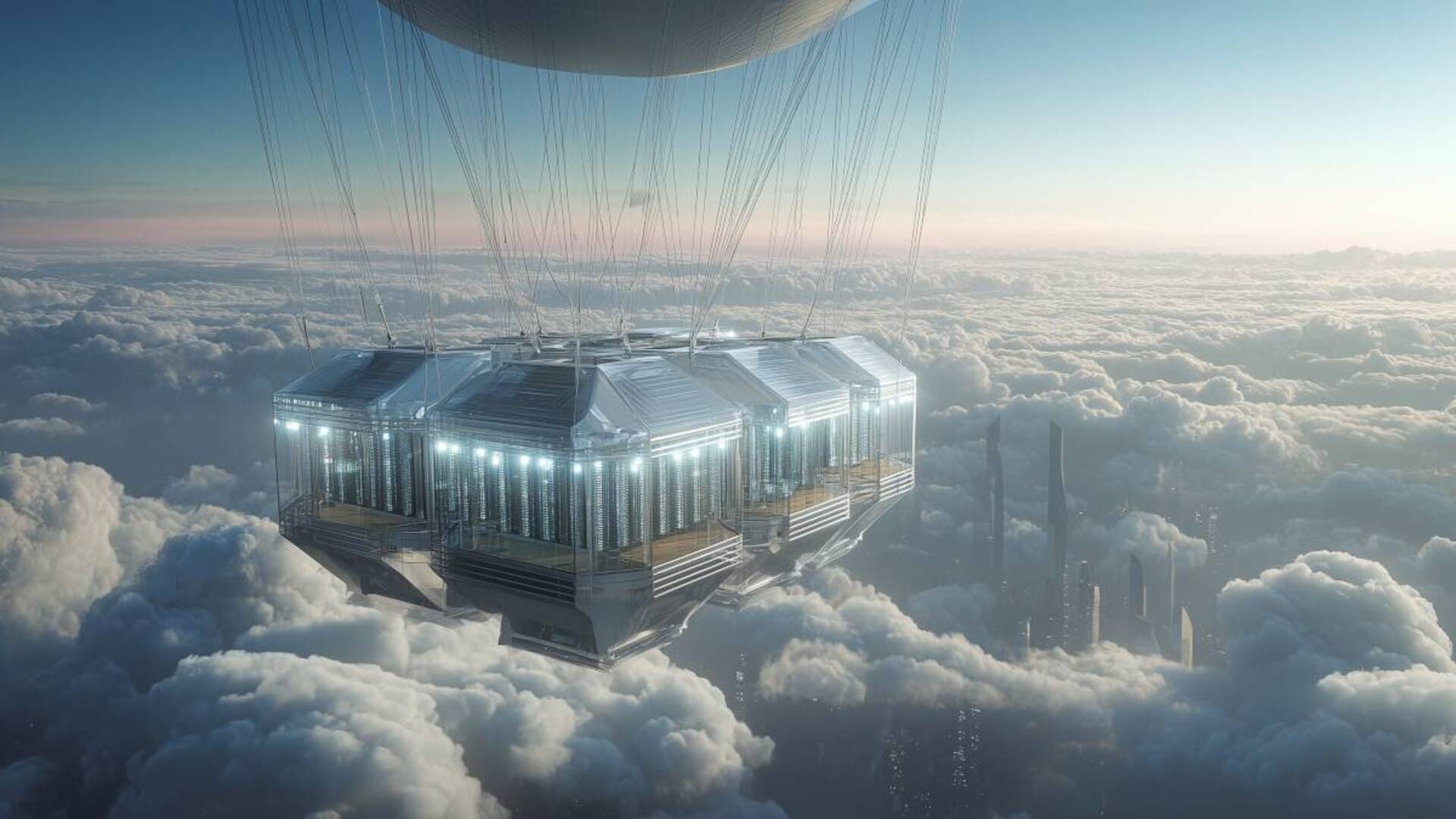Lenovo goes literal with its view of the future of "the cloud" - here's what it thinks future data centers will really look like
AI tools are driving data demand far beyond current infrastructure capabilities

- Lenovo imagines data centers suspended above clouds to save land and energy
- Data Spas place servers near geothermal pools, raising serious security concerns
- Underground bunkers offer protection and natural cooling for high-density computing, or maybe not
Lenovo has revealed a series of highly unconventional concepts which imagine what the data center infrastructure of the future could look like.
The company argues traditional data centers must evolve to support businesses, as nearly half of IT corporate buyers admit their infrastructure fails to meet energy demands and carbon goals.
In response, Lenovo has proposed several unconventional designs, including one that places data centers almost literally among the clouds.
Data centers above the clouds
Each design shows a different approach to powering massive CPU and AI workloads while addressing energy efficiency and sustainability concerns.
The most unusual of Lenovo’s designs is the “Floating Cloud,” a data center suspended between 20 and 30 kilometers above the Earth’s surface.
At that height, it would operate entirely on solar power while using pressurized liquid cooling systems to manage heat.
The concept removes land constraints but poses major security risks, as a structure floating above commercial airspace would be difficult to protect and vulnerable to attack.
Sign up to the TechRadar Pro newsletter to get all the top news, opinion, features and guidance your business needs to succeed!
Lenovo also imagines what it calls a “Data Spa,” a geothermal-powered data center built into a natural landscape such as a valley or a hot spring.
Images of the concept show people walking through pools of water only meters away from server racks.
The design suggests a seamless integration between nature and technology, but it raises serious safety and security concerns.
Mixing open water and critical hardware would give any data center manager sleepless nights, no matter how efficient the cooling system claims to be.
A more grounded proposal is the “Data Center Bunker,” which uses abandoned tunnels, bunkers, or underground transit systems as secure data center sites.
Lenovo claims these subterranean locations “create a naturally efficient heat management system,” although anyone familiar with underground heat levels might disagree.
Still, the design offers advantages such as reduced land use and improved physical protection, making it one of the few practical ideas in the collection.
Lenovo says future data centers must support the rapid growth of AI tools and automation while cutting carbon emissions.
Its Neptune liquid cooling system is designed to remove up to 98% of system heat directly from the source, reducing energy use compared to traditional air cooling.
The company insists that such solutions are necessary as AI demand rises and data sovereignty rules tighten across regions.
These designs are just concepts for now, but Lenovo's message is clear: unless data centers evolve quickly, the future of computing will face physical and environmental bottlenecks.
“The data center of the future will be defined by how effectively it can scale for AI, deliver on sustainability targets, and operate with maximum energy efficiency,” said Simone Larsson, Head of Enterprise AI, EMEA at Lenovo.
“As demand for compute accelerates, customers will increasingly look to infrastructure partners who can deliver performance without compromise…Future-ready data centers require a shift in mindset, one where sustainability is not retrofitted...”
Follow TechRadar on Google News and add us as a preferred source to get our expert news, reviews, and opinion in your feeds. Make sure to click the Follow button!
And of course you can also follow TechRadar on TikTok for news, reviews, unboxings in video form, and get regular updates from us on WhatsApp too.

Efosa has been writing about technology for over 7 years, initially driven by curiosity but now fueled by a strong passion for the field. He holds both a Master's and a PhD in sciences, which provided him with a solid foundation in analytical thinking.
You must confirm your public display name before commenting
Please logout and then login again, you will then be prompted to enter your display name.